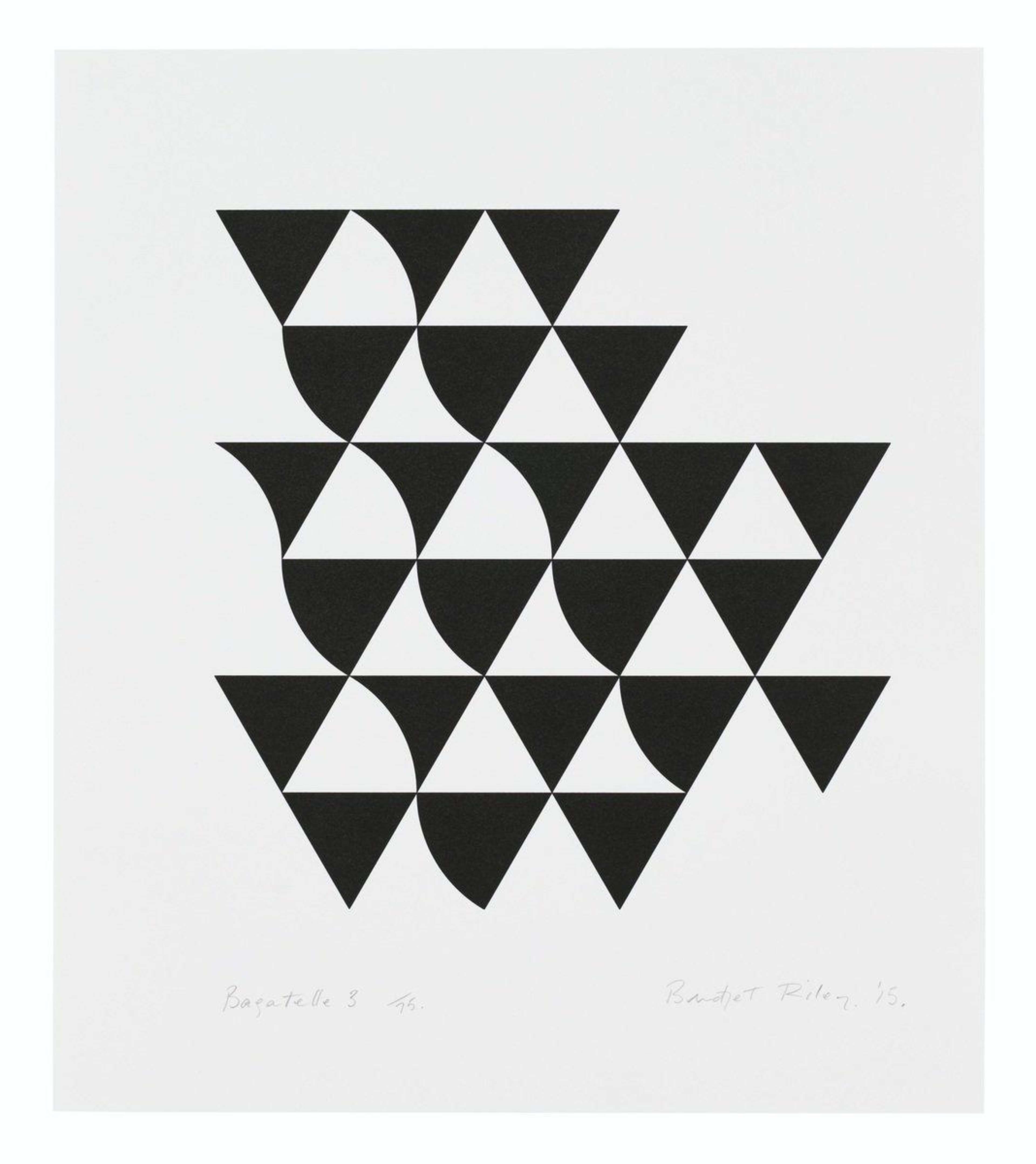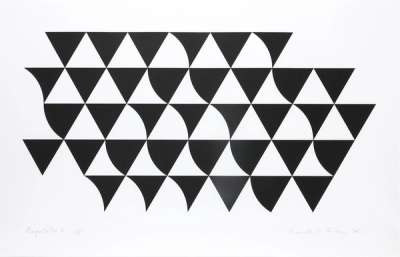
Bagatelle 3

Bagatelle 3
Signed Print
Bridget Riley
£8,000-£12,000Value Indicator
$17,000-$26,000 Value Indicator
$14,500-$22,000 Value Indicator
¥80,000-¥110,000 Value Indicator
€9,500-€14,000 Value Indicator
$80,000-$120,000 Value Indicator
¥1,510,000-¥2,260,000 Value Indicator
$10,500-$16,000 Value Indicator
AAGR (5 years) This estimate blends recent public auction records with our own private sale data and network demand.
There aren't enough data points on this work for a comprehensive result. Please speak to a specialist by making an enquiry.
Medium: Screenprint
Edition size: 75
Year: 2015
Size: H 67cm x W 59cm
Signed: Yes
Format: Signed Print
TradingFloor
Track this artwork in realtime
Watch artwork, manage valuations, track your portfolio and return against your collection
Track auction value trend
Auction Results
| Auction Date | Auction House | Location | Hammer Price | Return to Seller | Buyer Paid |
|---|---|---|---|---|---|
| December 2024 | Forum Auctions London | United Kingdom | |||
| October 2024 | Forum Auctions London | United Kingdom | |||
| September 2024 | Phillips London | United Kingdom | |||
| September 2020 | Christie's London | United Kingdom | |||
| September 2020 | Sotheby's London | United Kingdom | |||
| June 2020 | Tate Ward Auctions | United Kingdom | |||
| March 2020 | Christie's London | United Kingdom |
Meaning & Analysis
Bagatelle 3 is a signed screen print from 2015, released in a limited edition of 75. This print is a part of the Bagatelle series by the Op Art artist, Bridget Riley. Bagatelle 3 is exemplary of Riley’s non-representational approach to painting, in which colour, shape and form take precedence. Printed on wove paper Bagatelle 3, the last print in the Bagatelle series, like the other two, represents a configuration of triangles in monochrome.
This optically dazzling print references many concepts that underpinned Riley’s hugely successful art of the 1960s, initially propelling her to fame. Demonstrating Riley’s firm commitment to non-representational painting, the simple forms deconstruct as the viewer’s eye passes over them, placing the subjectivities inherent to the spectatorship of art at the fore. Indeed, the subjective experience of each viewer when regarding a painting was a fundamental step in the creative process, according to Riley. This series of prints is significant in Riley’s oeuvre, representing a final body of monochrome work before the artist began to integrate colour into her practice.
Bridget Riley, a leading figure in the British Op-Art movement, has captivated audiences with her abstract paintings and prints that challenge visual perception. Born in London, 1931, Riley’s artistic journey evolved from semi-Impressionist beginnings to geometric mastery, significantly influencing modern art. Her groundbreaking artworks, from Movement In Squares to the vibrant Stripes series, explore optical phenomena and colour dynamics, creating mesmerising, dizzying effects. With a prolific career spanning over seven decades, Riley’s innovative designs and perceptual disruptions continue to shape contemporary British art, solidifying her enduring influence in the realm of abstract and modern art.

